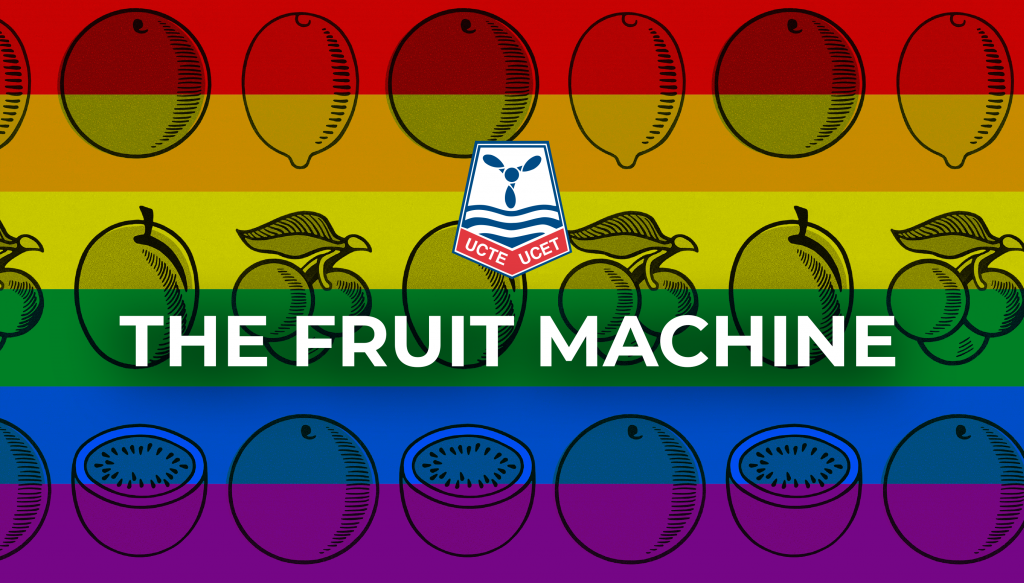In honour of Pride Month, UCTE exposes the “Fruit Machine” – The homosexual purge
15Many of us do not understand systemic discrimination. We have the false impression that, in Canada, a country with a reputation for acceptance and tolerance, we are well aware that such situations occur. But our history is one that includes fear, intolerance and discrimination.
In the 1940s, there was a major scandal in the British Parliament. Five of its most powerful Members, dubbed the “Cambridge Five”, were communist infiltrators. When the government discovered that one of them was a homosexual, the link was made between homosexuality and communism, disloyalty and subversive activities.
Canada was not immune to these ideas either. The government was afraid that homosexuals would be at greater risk of blackmail by Russian spies. That is why they wanted to identify them and remove them from jobs that could place them in a position of “power” in which they could reveal the nation’s secrets.
It was then that Canada introduced an electropsychometer called the “Fruit Machine”.[1] The purpose of that scientific invention was to detect homosexuals in order to remove them from their government jobs or classify them so that they would not be offered jobs.
As filmmaker Sarah Fodey explained in a CBC article:
It was designed in the early 1960s by Frank Robert Wake, a psychology professor with Carleton University. … The Canadian government paid to send Dr. Wake to the United States to study detection devices that were used there at the time. After about a year of research, Dr. Wake returned to Canada and used his findings to create the ‘Special Project’ as it was officially known. A sergeant with the RCMP later coined it ‘the fruit machine,’ and the name stuck.
The story is recounted by the survivors of that “homosexual purge” linked to the Canadian Army and the Government of Canada civil service in the film “The Fruit Machine”.
The plan was to monitor as many physiological variables as possible in the hope of finding a reliable method to identify homosexuals without raising the fear and anxiety connected with polygraph tests.
How did the machine work?
The men would be subjected to lewd images, and photographs would be taken of their pupils in response to the various images. The idea was that, if the men’s pupils dilated at the sight of a naked man, that would indicate attraction for the same sex.
The Fruit Machine consisted in a series of questions, a chair resembling a dental chair, and flashing images of banal scenes contrasting with pornography that the people thought would appeal to homosexuals. The subjects, who were told that that machine measured stress, were seated in the chair and looked at the images, while the scientists noted their pulse, skin reflexes, respiration rate and pupil response.
How was it stopped?
In the end, the project fell apart in 1967,[2] when the homosexual panic calmed down a little and the government decided that its coffers were no longer deep enough to justify breaking through new scientific obstacles to oust homosexuals from their work.
Consequences
The careers of more than 9,000 people were affected. In addition, many of the victims of the Fruit Machine were considered by the RCMP to be enemies of the state. The list included Native peoples and PSAC activists.
It is important to note that the RCMP continued its efforts. It contracted for more invasive tests for unsuspecting participants. Even after queer sex was decriminalized, the Fruit Machine continued to keep an eye on Canadian men and women in the public sector until 1990.[3]
The documentary’s director, Sarah Fodey, was not aware of everything that was related with the ‘’Fruit Machine’’. Everything was new for her. She met George Hartsgrove. They discuss together about producing a documentary about George’s failed attempt to open Canada’s first homosexual retirement home in Ottawa.
Confuse, Fodey tried to put everything together. More she knew, more she was mind blow about all the facts related to the ‘’Fruit Machine’’. She tried to draw kind of a story board for her documentary, but it was not easy. It took 16 years after the first coffee with George. They found names, facts and testimonies who helped to put a real story together. Her world premiere on June 1, 2018 the first day of Pride Month at Toronto’s Inside Out LGBT Film Festival.
Here is Sarah Fody’s documentary:
[1] https://rabble.ca/activist-toolkit/fruit-machine/
[2] https://calgarygayhistory.ca/2013/07/11/canadas-shameful-harvest-of-queers-in-the-50s-60s/
[3] https://rabble.ca/activist-toolkit/fruit-machine/
